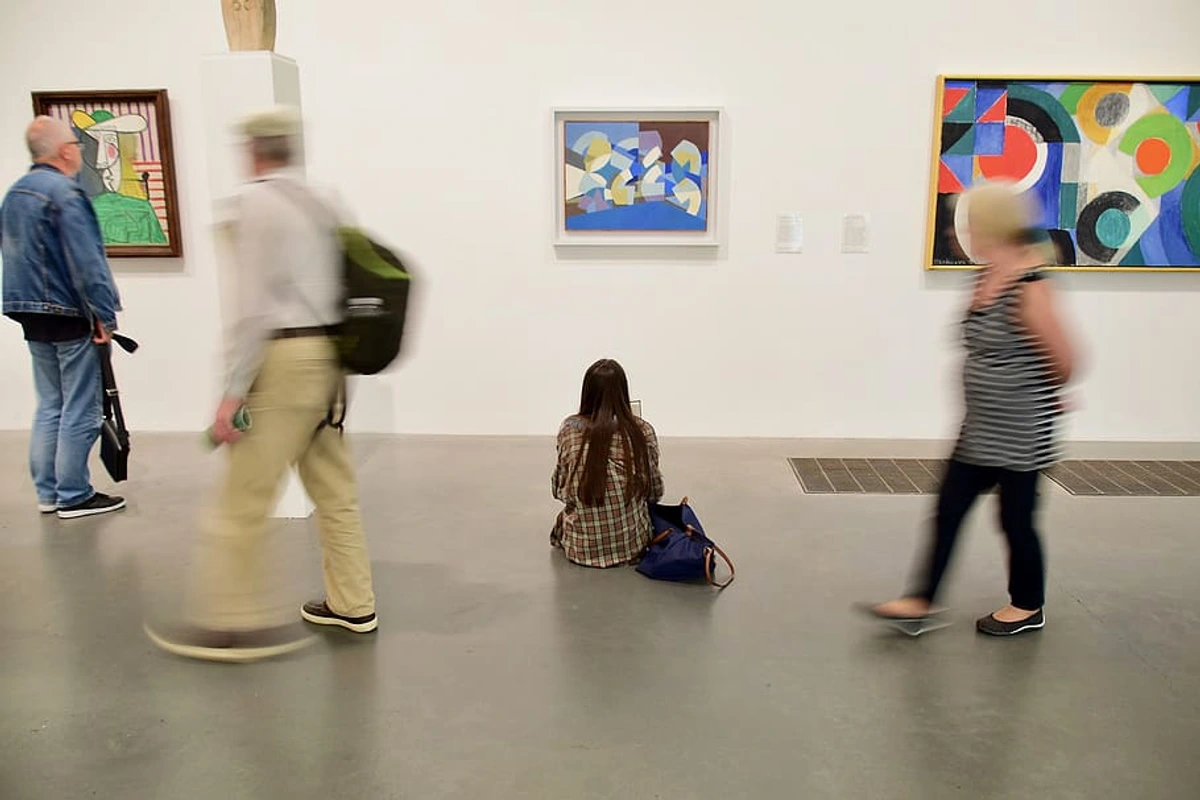
Best Modern Art Galleries: Top Museums & Visitor Guide
Explore the world's best galleries for modern art. Discover iconic collections at MoMA, Tate Modern, Centre Pompidou, and more, plus tips for planning your visit and connecting with the art.
Discover the World's Best Galleries for Modern Art
Modern Art, roughly spanning the period from the 1860s to the 1970s, represents a radical departure from traditional artistic conventions. Movements like Impressionism, Post-Impressionism, Fauvism, Cubism, Surrealism, and Abstract Expressionism redefined visual language. Visiting dedicated galleries and museums is the best way to experience these groundbreaking works firsthand. It's where the art truly lives, breathes, and, if you're open to it, speaks to you.
I remember the first time I stood before a really famous painting I'd only ever seen in books. It was like meeting a celebrity you thought you knew, only to find they have a presence, a scale, a texture you could never grasp from a flat image. Seeing Van Gogh's Starry Night online is one thing; standing before it, feeling the energy he poured into those swirling blues and yellows, is quite another. Sometimes art seen only in books or screens feels a bit... flat, doesn't it? Like trying to understand a hurricane by looking at a weather map. Getting up close allows you to see the texture, the scale, the sheer presence of the work. It’s about letting the art speak directly to you, bypassing the filter of reproduction. You might even find yourself surprised by what resonates – maybe it’s not the famous masterpiece, but a lesser-known sketch tucked away in a corner that grabs you. That's the magic of the gallery visit; it's a personal encounter. You can learn more about the overall history of art here.
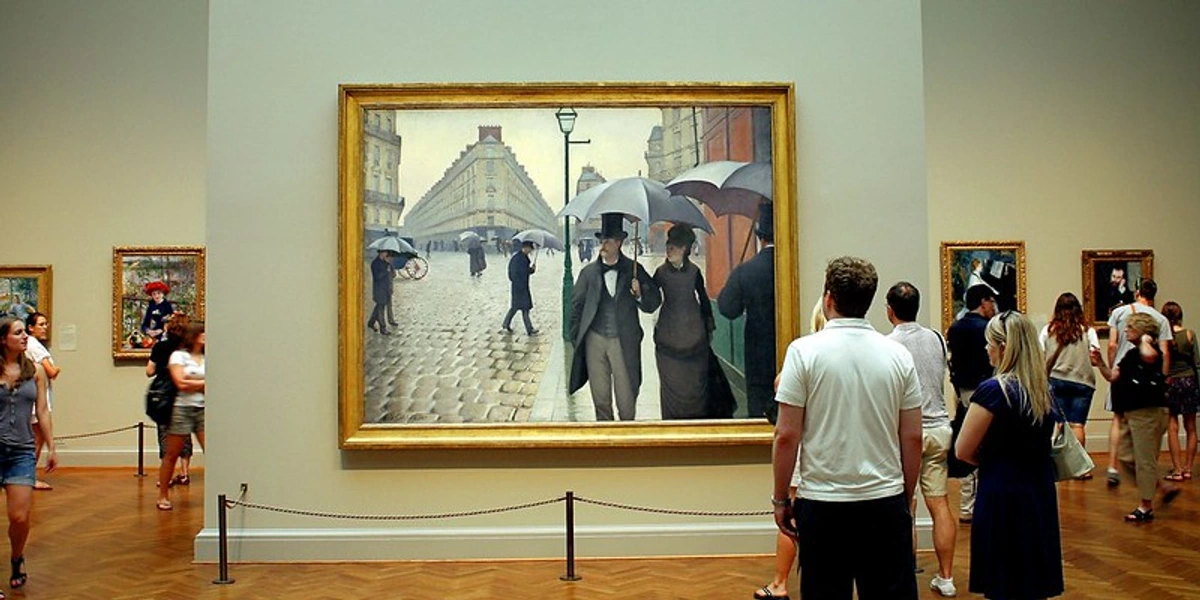
Here are some of the best galleries globally renowned for their Modern Art collections:
1. Museum of Modern Art (MoMA) - New York City, USA
A titan in the art world, MoMA holds one of the most comprehensive and influential collections of Modern Art. It played a crucial role in defining and promoting modernism in America. Visiting MoMA feels like stepping into the very textbook of modern art history – overwhelming, maybe, but undeniably essential. The sheer density of iconic works can be staggering; give yourself time just to absorb. It's a place where you can trace the lineage of modernism, from its European roots to its American explosion.
- Highlights: Picasso's Les Demoiselles d'Avignon, Van Gogh's Starry Night, works by Matisse, Pollock, Warhol, and extensive photography and design collections.
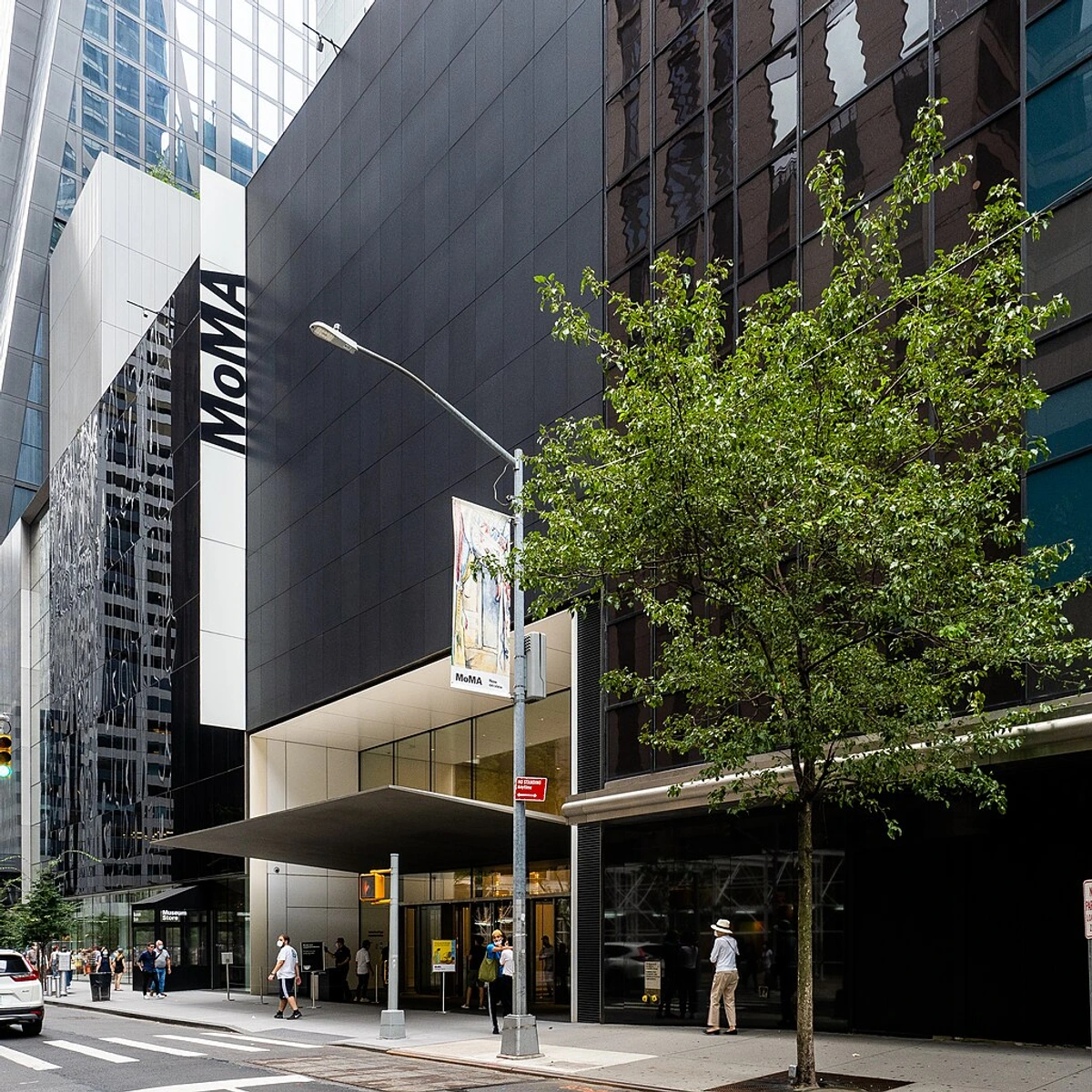
2. Tate Modern - London, UK
Housed in a former power station on the Thames, Tate Modern focuses on international modern and contemporary art from 1900 to the present day. Its thematic displays offer fresh perspectives on art history, breaking away from purely chronological hangs. The building itself is part of the experience – that massive Turbine Hall often hosts installations that play with scale in a way few other spaces can. It’s less a quiet temple, more a bustling hub of ideas. I always find the way they group works by theme rather than strict chronology sparks unexpected conversations between pieces.
- Highlights: Significant holdings of Rothko, Dalí, Picasso, Matisse, and impressive large-scale installations in the Turbine Hall.
3. Centre Pompidou - Paris, France
Instantly recognizable by its "inside-out" architecture, the Centre Pompidou houses the Musée National d'Art Moderne, France's national museum for modern art. Riding the external escalators offers fantastic views of Paris, a nice bonus! Inside, the collection feels distinctly European, with deep dives into movements that flourished on the continent. It feels vibrant, maybe even a little chaotic, reflecting the building's unconventional design. It's a place that reminds you modern art wasn't just born in New York; Paris was its crucible for decades. Strong representation of Fauvism and Cubism here.
- Highlights: Strong collection of European modern masters like Kandinsky, Braque, Miró, and a significant representation of Fauvism and Cubism.
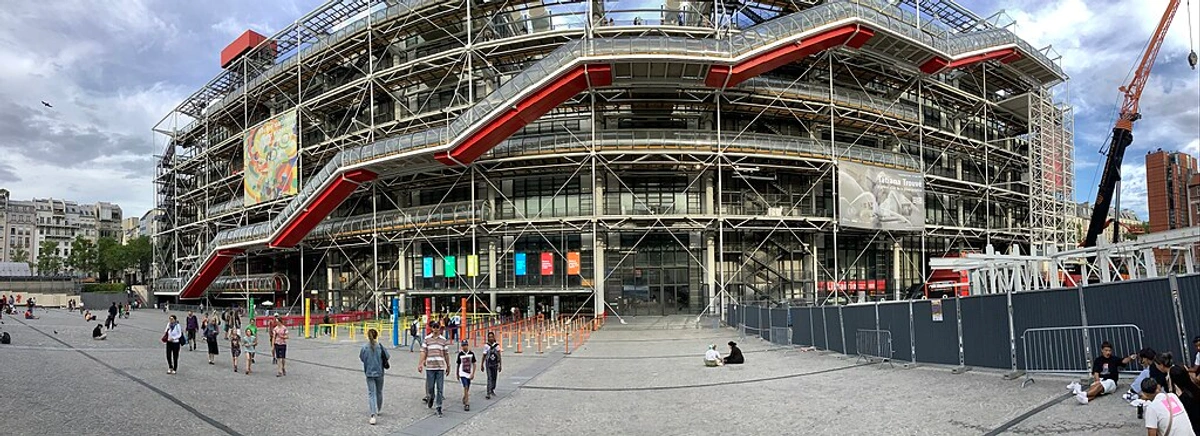
4. Guggenheim Museum Bilbao - Bilbao, Spain
While also featuring contemporary art, the Guggenheim Bilbao, designed by Frank Gehry, is an architectural masterpiece with a strong foundation in 20th-century modern art. The building itself often steals the show – those shimmering titanium curves are unforgettable. The art inside often interacts powerfully with the unique spaces Gehry created, especially the large-scale sculptures. It's a perfect example of how the building can be as much a part of the art experience as the works it houses. Seeing a massive Richard Serra sculpture in one of those vast, curved galleries is something else entirely.
- Highlights: Large-scale, site-specific works by artists like Richard Serra, alongside pieces by key figures such as Anselm Kiefer and Jeff Koons, often bridging modern and contemporary themes.
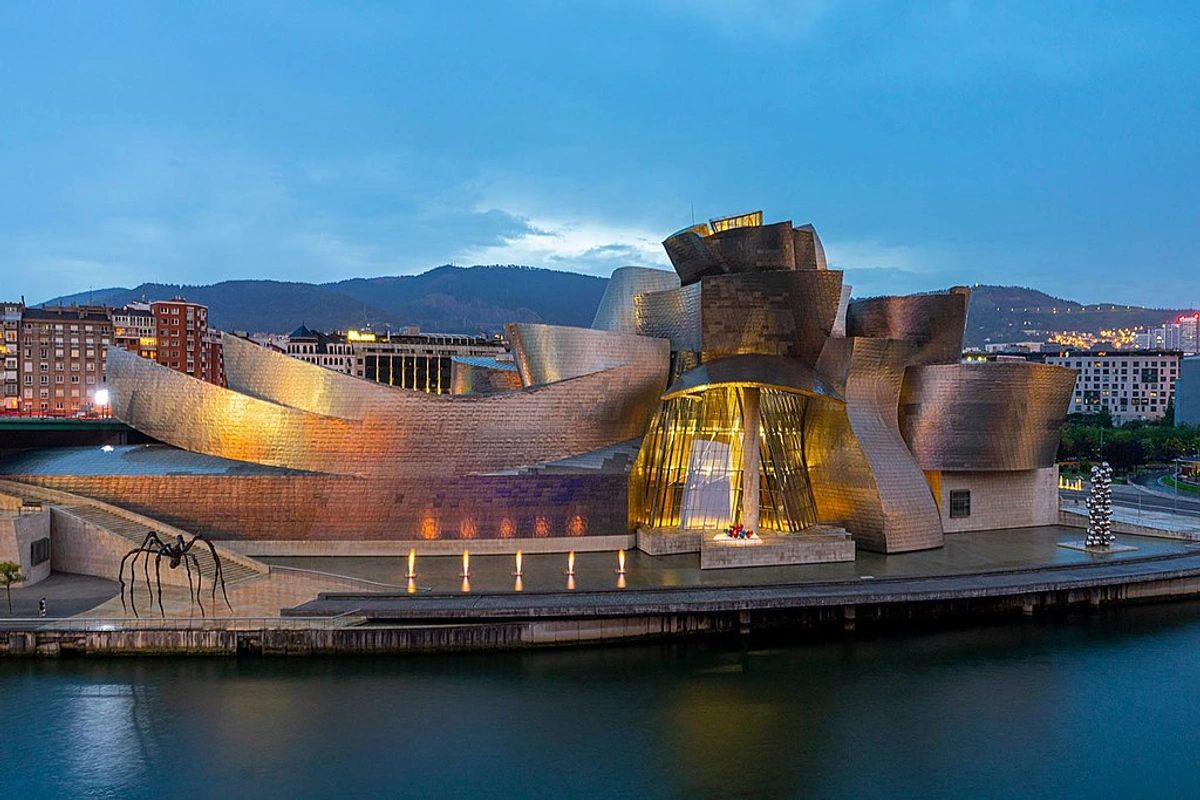
5. Reina Sofía Museum - Madrid, Spain
Home to arguably one of the most powerful anti-war statements ever painted, Picasso's Guernica, the Reina Sofía is Spain's national museum of 20th-century art. Standing before Guernica is a profound experience; its scale and raw emotion are truly arresting. Beyond Picasso, the museum offers extensive collections of Spanish modern masters like Salvador Dalí and Joan Miró, providing deep context for their work. It's a must-visit if you want to understand the Spanish contribution to modernism, which is immense.
- Highlights: Picasso's Guernica, significant collections of Dalí and Miró, Spanish Surrealism, and international modern works.
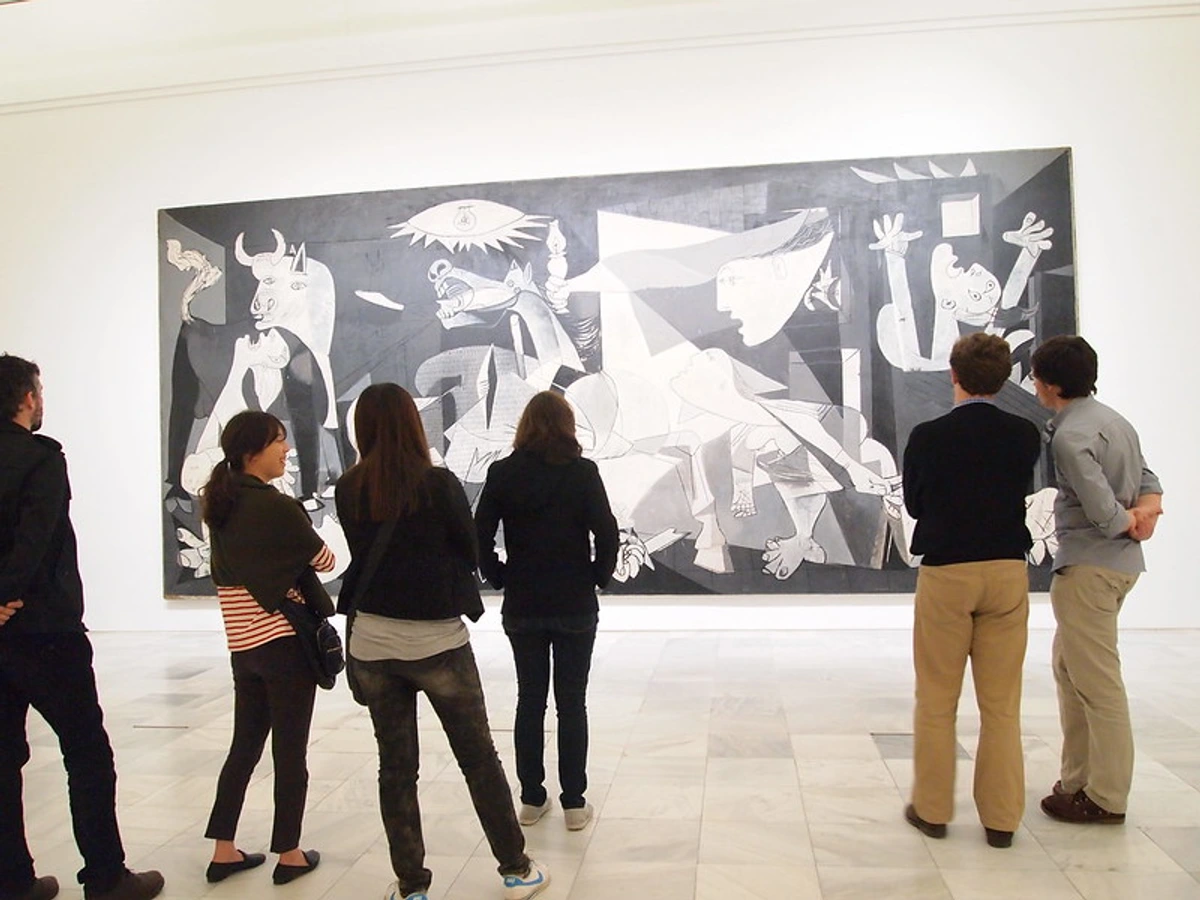
6. Art Institute of Chicago - Chicago, USA
While covering a vast range of art history, the Art Institute boasts an exceptional collection of Impressionist and Post-Impressionist paintings, making it a crucial stop for modern art lovers. Seeing Seurat's A Sunday on La Grande Jatte in person, with its meticulous dots, or the sheer volume of Monet's Haystacks and Water Lilies, is quite something. It feels like walking through the heart of French modernism, right there in the Midwest. Their collection provides a beautiful bridge from the precursors of modern art into the movements that followed.
- Highlights: World-renowned Impressionist and Post-Impressionist collection (Monet, Renoir, Degas, Seurat, Van Gogh, Gauguin), significant holdings of Picasso, Matisse, and Surrealism.
![]()
7. Stedelijk Museum Amsterdam - Amsterdam, Netherlands
Focusing on modern and contemporary art and design, the Stedelijk offers a fantastic overview, particularly strong in De Stijl (think Mondrian), Cobra, and post-war movements. Its "bathtub" extension is a modern architectural statement in itself. The museum often feels dynamic, blending painting, sculpture, photography, and design in thought-provoking ways. As someone based in the Netherlands, this one feels particularly close to home, offering a deep dive into Dutch contributions to modernism and beyond. It's a great place to see how design and fine art intersected in the modern era.
- Highlights: Extensive collection of De Stijl (Mondrian, Rietveld), Cobra group, Kazimir Malevich, significant Pop Art, and contemporary design.
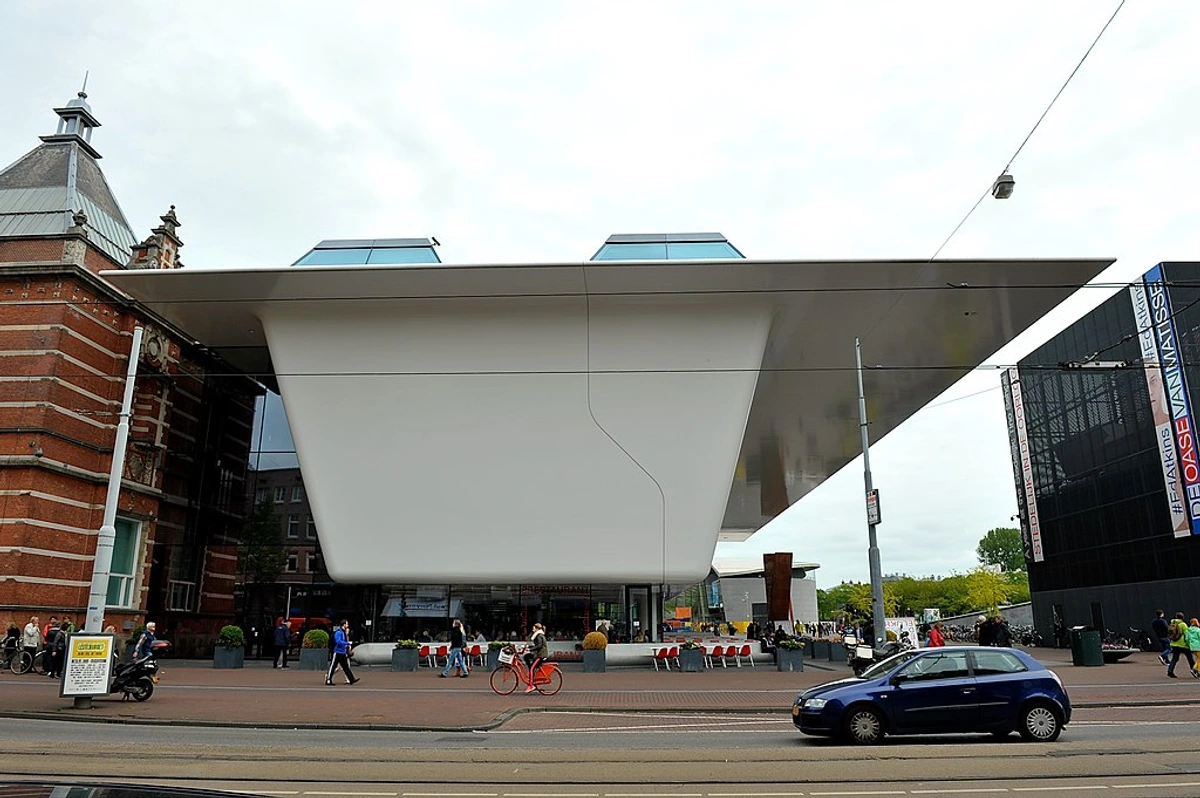
8. Louisiana Museum of Modern Art - Humlebæk, Denmark
Often cited as one of the most beautiful museums in the world, Louisiana seamlessly blends art, architecture, and landscape. Located on the coast north of Copenhagen, its collection spans modern and contemporary art with a strong focus on post-war movements. The experience of walking through the sculpture park overlooking the sea, or viewing art in the light-filled galleries, is truly unique. It feels less like a traditional museum and more like a curated journey through art and nature. It's a place that makes you feel good about looking at art.
- Highlights: Extensive collection of post-war American and European art (Giacometti, Picasso, Warhol), significant sculpture park, and temporary exhibitions.
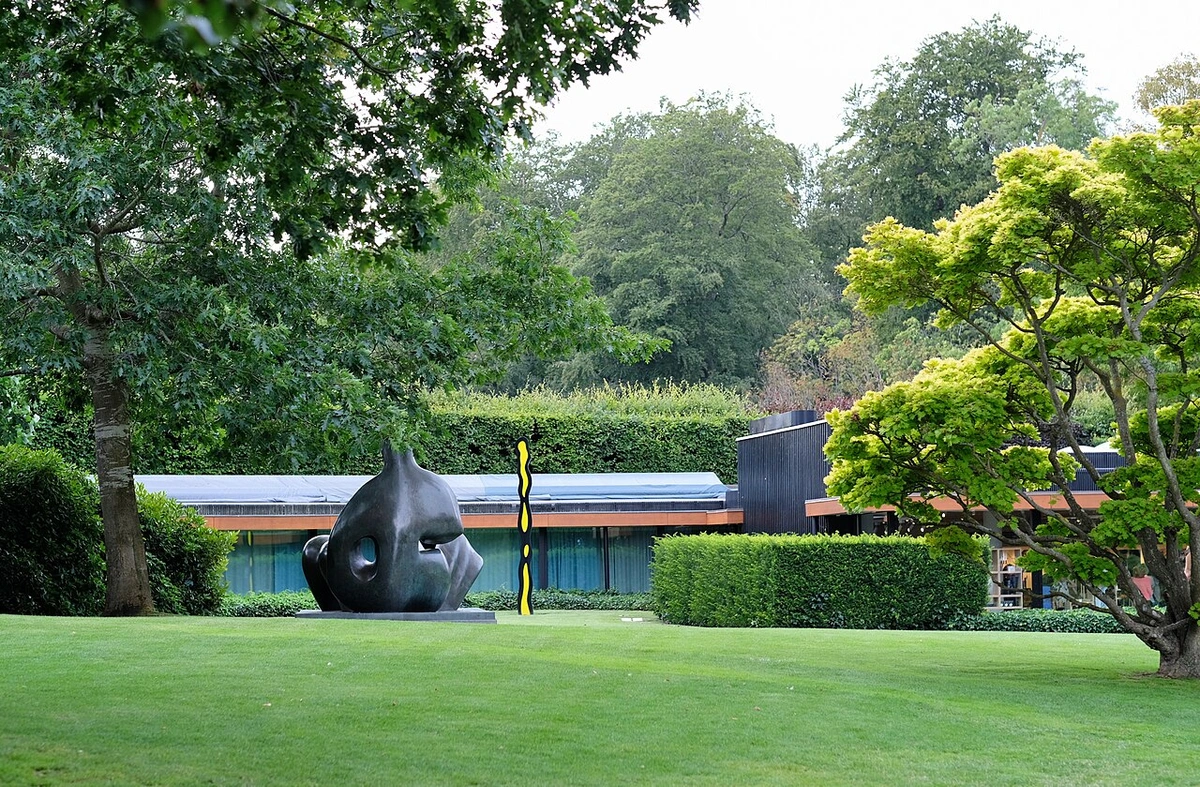
9. Centre Pompidou-Metz - Metz, France
A satellite of the Paris Centre Pompidou, this museum is another architectural marvel, known for its distinctive wavy, tent-like roof. It hosts large-scale temporary exhibitions drawn from the vast collection of the Musée National d'Art Moderne. While not a permanent collection in the same vein as the others, its ambitious rotating shows make it a significant destination for modern and contemporary art lovers, offering fresh perspectives and deep dives into specific themes or artists. It's a reminder that important art experiences aren't limited to capital cities.
- Highlights: Ambitious temporary exhibitions drawn from the Centre Pompidou collection, striking architecture.
Key Gallery Summary
Gallery Name | City | Key Focus / Notable Aspects | Key Artists Example |
|---|---|---|---|
| MoMA | New York | Seminal Modern Art Collection, Design, Film | Picasso, Van Gogh, Pollock |
| Tate Modern | London | International Modern & Contemporary, Thematic | Rothko, Dalí, Matisse |
| Centre Pompidou | Paris | European Modern Art, Architecture | Kandinsky, Picasso, Miró |
| Guggenheim Bilbao | Bilbao | Modern & Contemporary, Iconic Architecture | Serra, Kiefer, Koons |
| Reina Sofía Museum | Madrid | Spanish & International Modern Art, Guernica | Picasso, Dalí, Miró |
| Art Institute of Chicago | Chicago | Impressionism/Post-Impressionism, European Modern | Monet, Seurat, Picasso |
| Stedelijk Museum | Amsterdam | De Stijl, Cobra, Modern/Contemporary Design & Art | Mondrian, Malevich, Warhol |
| Louisiana Museum | Humlebæk | Post-War European/American, Sculpture Park | Giacometti, Picasso, Warhol |
| Centre Pompidou-Metz | Metz | Temporary Exhibitions from Pompidou Collection | (Varies by exhibition) |
Beyond the Giants: Smaller Museums and Galleries
While the behemoths like MoMA and the Tate are incredible, don't overlook smaller or regional modern art museums. Sometimes, these offer a more intimate experience, allowing you to spend quality time with works without the crowds. They might focus on specific regional artists, offer unique perspectives on movements, or simply provide a quieter space for reflection. I find visiting places like the artist's own small museum in 's-Hertogenbosch offers a different kind of connection – you see the work in a context that feels more personal, less institutional. Exploring these less-famous spots can uncover hidden gems and deepen your appreciation for the breadth of modern art.
This category includes:
- University Galleries: Often have surprisingly strong collections and are great places to see student or faculty work alongside established artists.
- Regional Museums: Focus on artists from a specific area, providing valuable local context.
- Artist-Specific Museums: Dedicated to a single artist, offering an unparalleled deep dive into their life and work (like the Van Gogh Museum in Amsterdam, though that's hardly 'small'!).
- Commercial Galleries: While focused on selling, many commercial galleries, especially those specializing in modern masters or their contemporaries, offer museum-quality viewing experiences. They are also where you might discover emerging artists or even consider buying art yourself.
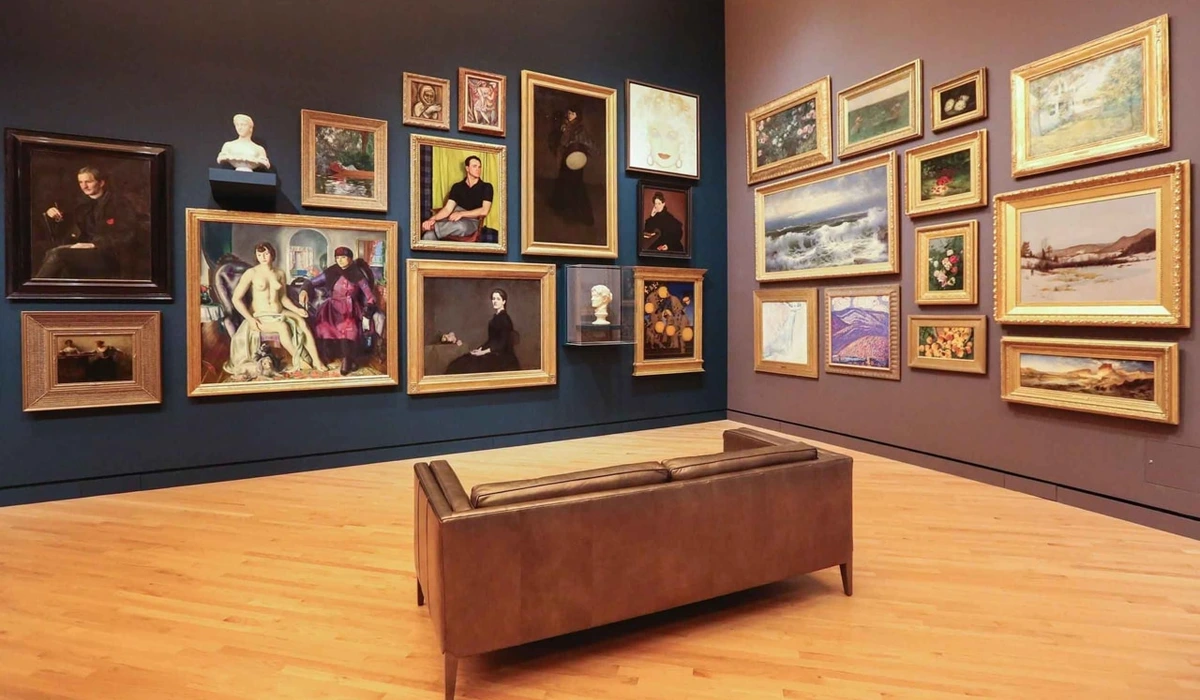
Getting the Most Out of Your Visit
Okay, let's be honest, sometimes wandering through a massive museum can feel a bit... much. You start with enthusiasm, determined to see everything, and by gallery 15, your feet hurt, your brain is full, and everything starts to look like colourful blobs (especially if it's abstract art, right?). Here are a few thoughts on making your visit more rewarding:
- Don't Try to See Everything: Seriously. Pick a few wings, movements, or artists that genuinely interest you. Quality over quantity. Check the museum map beforehand and make a loose plan. I always feel a pang of guilt leaving sections unseen, but it's better than museum fatigue setting in.
- Look Beyond the Label: Read the wall text, sure, but then spend time just looking. What catches your eye? What feelings does it evoke? How does the colour, line, or composition work? Try reading the painting visually first. Sometimes the most profound connection happens before you know the artist's name or the title.
- Take Breaks: Find a bench, grab a coffee. Let your mind process. Staring fatigue is real. Your brain needs downtime to absorb what it's seen.
- Consider a Tour or Audio Guide: Sometimes a little expert guidance can unlock new ways of seeing, especially with art styles that initially seem challenging. It's like having a knowledgeable friend whisper insights in your ear.
- Go Off-Peak: If possible, visit on a weekday morning or late afternoon to avoid the biggest crowds. Having space to breathe and contemplate makes a huge difference. It's easier to have that personal encounter when you're not jostling for position.
- Reflect Afterwards: What stayed with you? What surprised you? Maybe jot down a few notes or discuss it with a friend. It helps solidify the experience. I often find the real insights come later, when my mind has had time to chew on it.
- Connect it to Your Life: Does a piece remind you of something? A feeling, a place, an idea? Art isn't just history; it can be personal. Perhaps it even inspires you to buy art for your own space, bringing that connection home. Or maybe it just makes you think about how artists use color in a new way.
Planning Your Modern Art Journey
Thinking of building a trip around modern art? Excellent idea! Many of the world's best modern art galleries are clustered in major cultural hubs. Planning a trip to best art cities like New York, London, or Paris can allow you to visit multiple top-tier institutions in one go. Consider looking into city-specific art guides or museum passes to make the most of your time. And remember, sometimes the best discoveries are the unexpected ones – a small gallery down a side street, or a temporary exhibition you stumble upon. Keep an open mind, and comfortable shoes!
Frequently Asked Questions (FAQ)
Q1: What's the difference between Modern Art and Contemporary Art? A: Modern Art generally refers to art produced between the 1860s and the 1970s, characterized by experimentation and breaking from tradition. Contemporary Art refers to art created from roughly the 1970s to the present day, often addressing current societal issues, globalization, and identity, using a vast range of media. Understanding the timeline helps – check out this guide to art history periods.
Q2: Who are some essential Modern Artists to know? A: Key figures include Pablo Picasso, Henri Matisse, Salvador Dalí, Wassily Kandinsky, Piet Mondrian, Jackson Pollock, Frida Kahlo, Georgia O'Keeffe, and Marcel Duchamp. This guide covers more modern artists.
Q3: How can I find important modern art galleries near me or when traveling? A: Use online search engines ("modern art museum [city name]"), check city tourism websites (like guides to galleries in NYC or galleries in London), explore museum directory sites (like ICOM), and look at local art event listings. Don't forget apps like Google Maps often highlight museums too.
Q4: Where can I see specific famous modern paintings like Starry Night or Guernica? A: Famous works are often highlights of major museum collections. Starry Night is at MoMA (New York), Guernica is at the Reina Sofía (Madrid), Les Demoiselles d'Avignon is at MoMA, Seurat's La Grande Jatte is at the Art Institute of Chicago, and many key works by Matisse and Rothko are at Tate Modern (London). Museum websites usually list their collection highlights or allow searching their collection online. You can also explore famous modern art pieces online.
Q5: How can I learn more about specific Modern Art movements like Cubism or Surrealism? A: Beyond visiting galleries, many museum websites offer great online resources. You can also explore dedicated articles explaining different art styles, like our guides to Impressionism, Fauvism, Cubism, or Pointillism. Books and documentaries are also fantastic resources.
Q6: Is it okay to visit a modern art gallery if I don't know much about art? A: Absolutely! Galleries are for everyone. Don't feel intimidated. Go with an open mind, look at what interests you, and read the labels if you want to learn more. It's about personal experience, not passing a test. Just show up and see what happens.
Experiencing Modern Art in these renowned galleries offers invaluable insight into a pivotal era of artistic innovation. Plan your visit to witness these masterpieces – and maybe even discover why people like modern art so much! It's more than just looking; it's about feeling and connecting across time. It might even spark something in you, perhaps inspiring you to explore your own creativity or consider adding a piece of art for sale to your own space. The journey through modern art is a personal one, and these galleries are incredible places to start or continue that path.
